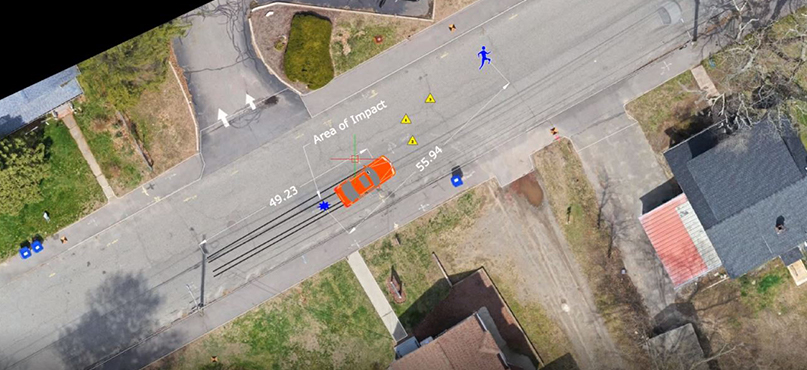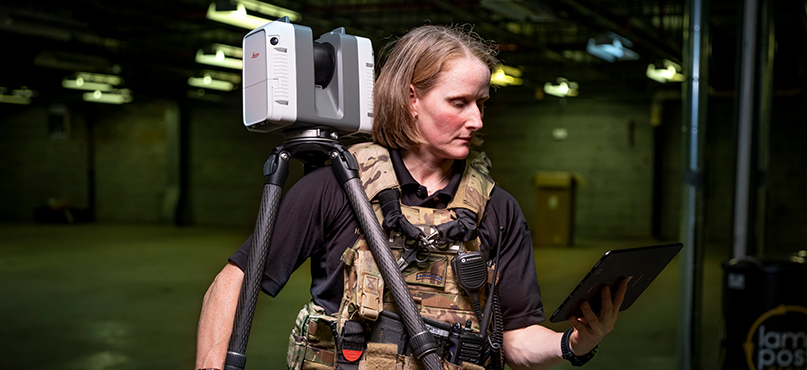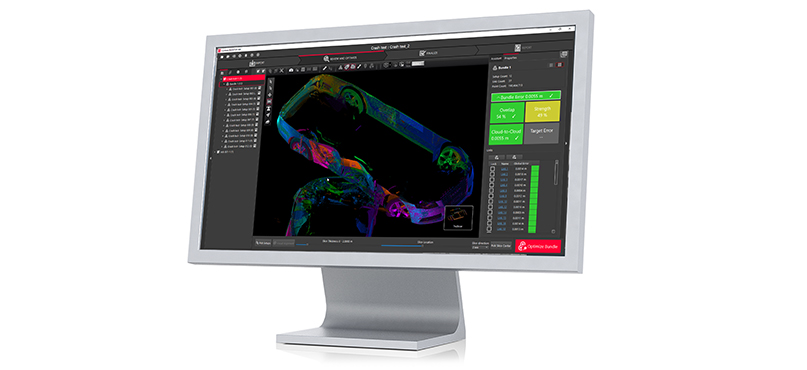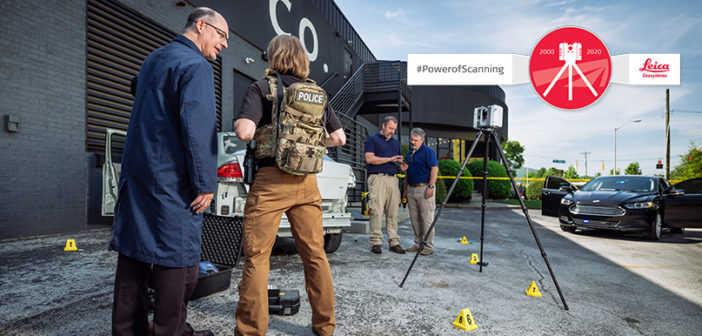The vast majority of the population lives in a digital world, and the same is true of public safety professionals. Digital transformation is changing the face of public safety, in terms of both the tools and the methodologies available.
One area in which this is having a noted impact is the process of capturing evidence from the scene of a crime or a collision. Previously, this involved manual methods such as tape measures and even sketches; 3D laser scanning is becoming the gold standard by making things easier – and safer – for all concerned.
Crime scenes, road accidents and fires all present their own safety and logistical challenges. As well as providing accurate 3D documentation and court-ready evidence, public safety professionals are under constant pressure to minimise disruption. This disruption can take many forms. It might mean clearing or even demolishing a scene or reopening a major road. It’s here that 3D laser scanning is changing how police departments, firefighters and security professionals capture and preserve every detail of a scene.
 Capturing the scene
Capturing the scene
Every scene or situation is different, but investigators or public safety operatives face a common challenge – the need to quickly and accurately capture data from the scene. The environment may be hazardous, or it may be a situation with tight time constraints. Contamination is also an important factor – environmental factors or the movement of people and objects can quickly disturb and alter a scene and tamper with critical evidence.
Using traditional equipment, such as cameras, theodolites or tape measures, risks compromising accuracy or speed, or both. As well as introducing the element of human error, these methods might only capture data from specified parts of a scene, omitting areas that may later turn out to be relevant. In addition, some traditional approaches demand scrupulous setup and deployment by skilled operators to obtain accurate results.
3D laser scanning technology helps sidestep these issues. Scenes can be accurately captured and documented in the smallest detail in minutes. The ability to capture the whole scene means that there is no need to compromise either accuracy or time. Easy-to-use technology makes the process intuitive, meaning that the equipment can be confidently operated with minimal training.
This means that scenes can be quickly captured and cleared, reducing disruption and the risks to investigators and the general public.
 Analysis with ease
Analysis with ease
Capturing a scene is just the vitally important first step. The rich data captured by 3D laser scanning technology can be analysed in detail away from the site, with investigators able to fully immerse themselves in a 3D scene and explore it from multiple angles. This data can be captured in many of formats, ranging from video and photogrammetric imagery to point cloud data.
In-field software can pull all these digital datasets together to build immersive 360-degree environment. These scanned scenes can then be viewed at the site of an incident within minutes or examined later at the office.
In some cases, it might be months or years before a case goes to court, after which the environment may have changed substantially or even been demolished. Aspects that may not have been relevant at the time may become relevant further down the line; investigators can recreate the scene exactly as it was, with clear visibility of every data point.
The accuracy of these recreated scenes can be extremely useful in helping witness memory. Revisiting an original scene after the event is of limited use – it may have changed beyond recognition. An immersive 3D recreation of the environment exactly as it was can often clarify the incident for participants.
 Presenting the evidence
Presenting the evidence
The ability to recreate these scenes accurately can play a pivotal role in a tribunal, hearing, or court of law. Public safety professionals can confidently present the evidence in meticulous detail, providing investigators and jurors with an accurate sense of the scene being examined.
Trajectories can be overlaid, and animation and fly-throughs can be provided. By moving beyond the traditional formats for presenting evidence, the visualisations and scene capture from 3D laser scanning technology can help all parties understand the key aspects of even the most complex of cases.
Revisiting an environment minutes or months later can make all the difference to an investigation. By removing the reliance on fallible and complex methods of data capture, 3D laser scanning technology allows operators to quickly and accurately capture a scene in exact detail with minimal training. The benefits are significant – not only for public safety professionals, but for the general public.
Scene investigation and forensic mapping has come a long way since the days of tape measures and chalk marks. 3D laser scanning gives investigators the ability to quickly capture the scene of a crime or an incident in fine detail, something that simply wasn’t possible before. The ability to recreate and understand these scenes exactly as they were is something that could make all the difference to the outcome of an investigation or a trial.
Contact us to learn more about our 3D laser scanning solutions
Contact our Forensic Mapping Experts














